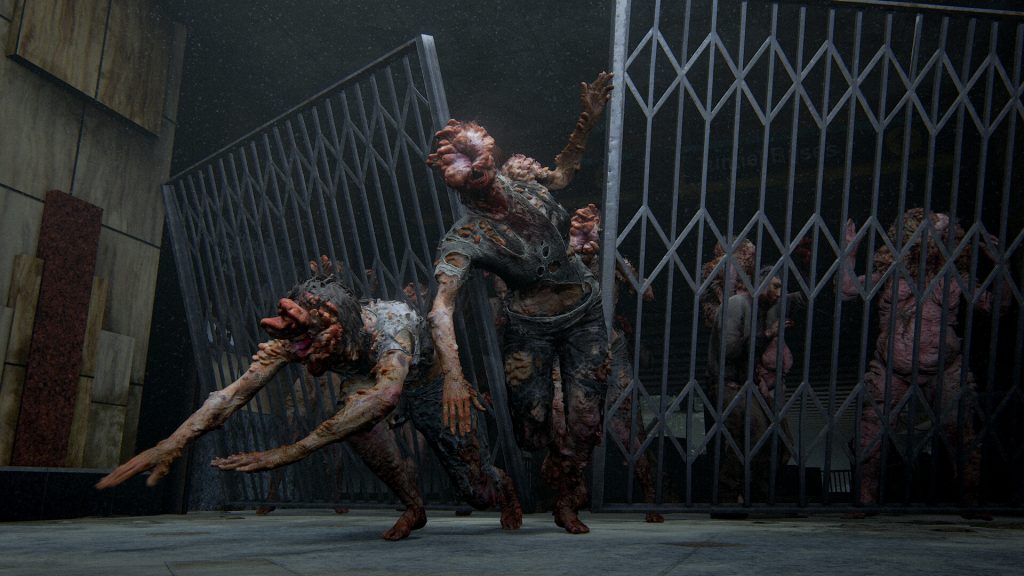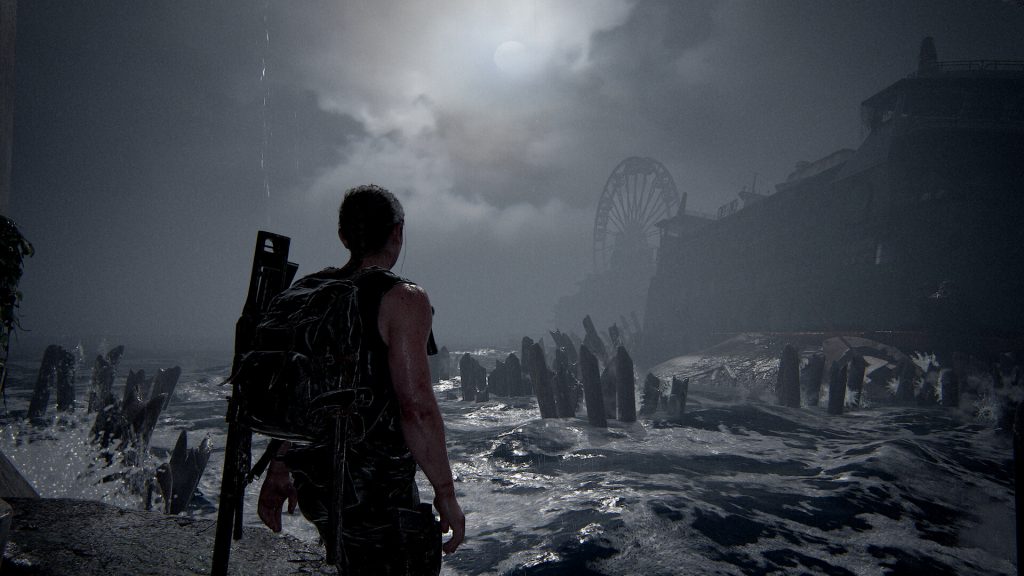The Last of Us Part II Remastered PC Review
Summary: Nixxes has done a fantastic job bringing The Last of Us Part II Remastered to the PC platform. A vast, beautiful game, that scales well across a vast array of hardware.
4.8
A great port!
Little over a year after hitting the PlayStation 5, the remaster of Naughty Dog’s 2020 masterpiece has made its way onto PC (you can read my thoughts on the PS5 release here).
As with most of Sony’s efforts to bring their IP to PC, The Last of Us Part II Remastered was developed in collaboration with Nixxes, who, despite a few stumbling blocks along the way, have generally done a good job with transferring Sony’s games to the PC platform.
I had access to the game before launch to check out the new features and technical improvements made to Naughty Dog’s classic.
The Last of Us Part II Remastered follows Ellie and Abby in what can only be described as a post-apocalyptic, stealth-action game, with the core of the gameplay taking place in quiet, ruined environments for the most part, and open-ended, mini-sandboxes where much of the combat takes place. The emphasis on stealth and resource management creates a tense, cat-and-mouse dynamic between the player and the enemies, with the line between them often blurring due to the dynamic nature of the encounters.
Nixxes’ PC port of TLoU Part II Remastered gets off to a strong start with an incredibly robust options menu. In my original review of the game, I praised the huge number of options available to players to customise the experience exactly how they wanted it, both in terms of general gameplay options and accessibility options, opening the game to a huge number of people who otherwise may have had to miss out.
All of this is thankfully still present in the PC release, along with a whole host of display and graphics options. Everything you’d expect to be here is here. And then some. Many of the standard options you’d expect in a PC game, for example, texture quality, have sub-menus that allow the quality of various individual aspects to be customised. It’s incredibly granular and very welcome.
There’s a full suite of upscaling options: DLSS, FSR 3.1 & 4, along with XeSS. DLSS and FSR both include their accompanying frame generation options, allowing the framerate to be pushed well in excess of 300fps, assuming you’ve got the hardware to hit the numbers.
In terms of hitting a given framerate, TLoU Part II Remastered succeeds far better than its predecessor, which was notoriously heavy and poorly optimised around its launch. I tried the game on two PCs, the first being my main, high-end gaming machine and the second being a far less powerful couch/TV rig. I’m happy to report that both hit 60fps with no issues whatsoever, with both being largely flawless aside from a few very minor dips on the later machine (a Ryzen 5 4500, 16GB of RAM, and an RTX 2080 Super at 1080p for reference).
One of the main issues that the first game’s PC port suffered from was an extremely long shader pre-compilation step upon the first launch. This isn’t the case with the sequel. Upon starting a new game, there’s a short pre-compilation step, that, as far as I can tell, deals with the opening areas. Subsequent shader compilation seems to take place during cutscenes before area changes, effectively hiding it, while maintaining a stutter-free experience. Skipping cutscenes will occasionally reveal short loading screens where further shaders are compiled.
All the above-combined leads to a very scalable game that seems to run well on a good range of hardware. I even managed to squeeze a mostly consistent 60fps at 4K on my aging couch machine (albeit with frame generation). The underlying framerate was noticeable this way, however, and didn’t necessarily always feel great to play, even when using a controller.
Sony’s Dual Sense controller is fully supported, though it needs to be a wired connection to make full use of all the features it has available. Full keyboard and mouse support is also there, something that isn’t necessarily a given in PC ports of console games these days, with it being possible to rebind all keys.
So, beyond all the stuff you’d hope would be there in a competent PC port, what else is there?
The main additions are an update to ‘No Return’ mode, a roguelike survival mode that was initially a part of the PS5 release. A fun and surprisingly deep side mode that strings together a series of small encounters with limited resources using different characters. Think of it as TLoU’s version of Mercenaries from Resident Evil. It adds a great deal of replay value to a game that I’d otherwise consider a one-and-done experience. The launch of the PC version adds two new characters to unlock and play as, along with four new maps to experience.
That’s about all there is in terms of new content, but there’s so much game here, that it doesn’t matter. The main campaign is incredibly long, coming in at around 25+ hours or so on my first run-through, and No Return adds plenty more hours on top of that if you want to unlock everything it includes.
The Last of Us Part II was a gorgeous game when it was first released in 2020 on PS4 and only got better once the remaster hit PS5. Now, thanks to the benefits of PC hardware, the game is the best that it has ever looked. The underlying game is still a PS4 title, however, so as good as it does look, it isn’t quite on the same level as the very latest, cutting-edge titles, but that’s to be expected. I felt that the audio in the PS5 version of the remaster was outstanding, and that’s still the case here, with some truly fantastic sound design.
Let’s now address the elephant in the room, or rather, the PlayStation Network in the room. Thankfully, it seems that Sony has gotten over whatever it was that made them think forcing a PSN sign-in to play the game was a good idea. Logging into the PlayStation Network is entirely optional, though doing so enables trophy support and grants 50 in-game points to unlock additional features, such as alternate costumes. Besides trophies, the only thing locked behind signing in is a skin referencing Naughty Dog’s next project, Intergalactic: The Heretic Prophet.
Steam Deck
The Last of Us Part II Remastered has verified status on Steam Deck and it’s mostly a decent experience. A graphics preset specifically for the Deck activates when loading the game, this can of course be overridden by the player however they feel, but it does a good job of maintaining a reasonably high level of graphical fidelity while keeping the framerate playable. It was seldom at 60fps when left unlocked, but setting the Steam Deck’s screen to 40fps gave a solid experience. Locking the screen to 30fps would be even more stable if you can tolerate the lower framerate.
It still dips below in heavier areas, locations like the Stadium putting it at sub 30fps occasionally, but moments like this are relatively fleeting. It’s a perfectly acceptable level of performance for a game like this on Steam Deck and a pleasant surprise.
Final Thoughts?
Naughty Dog’s dark, post-apocalyptic tale is now on PC in all its grim glory. If you haven’t played the game before, this is the perfect way to experience Ellie and Abby’s story. There are dozens of hours of content to engage with, both in the campaign and the surprisingly deep and enjoyable No Return mode that almost feels like it could have carried a different game by itself.
Nixxes have done an outstanding job of bringing the game to PC, righting many of the wrongs made with its predecessor, and producing a game that should be enjoyable on a massive range of hardware from low-end PCs and handhelds, right up to the very top of end of what is available.













